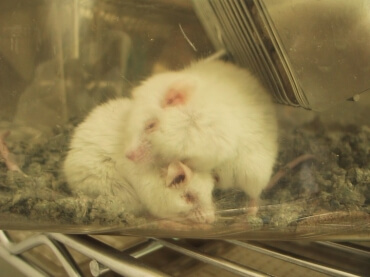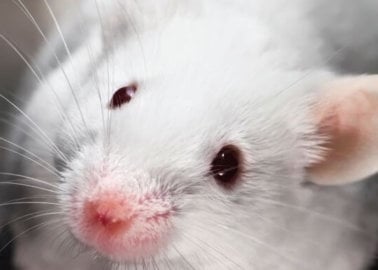Victory: Cruel Mouse Test to Be Ended in EU
 PETA pressure and campaigning have led to a humane alternative to replace the test, saving hundreds of thousands of mice.
PETA pressure and campaigning have led to a humane alternative to replace the test, saving hundreds of thousands of mice.
For decades, mice across the world have been routinely subjected to a cruel test to determine whether batches of shellfish intended for human consumption are contaminated with dangerous toxins. Mice are injected in the abdomen with extracts from the shellfish: if they die (slowly and in pain), the batch is infected; if they don’t, it isn’t and the batch is deemed safe for human consumption. Humane alternatives to the test have been available for many years, but the process of changing regulations to mandate their use has been very slow. In January 2010, after consistent pressure from PETA, the European Union introduced a new law that will finally get rid of the mouse test for most shellfish – for good. Approximately 300,000 mice will be spared each year as a result.
What Do the Tests Involve?
Mice are injected with extracts of batches of shellfish from different shellfish beds – these tests are conducted routinely and repeatedly because the toxins can emerge at any time. The physical experience of the injection has been compared to injecting a human being in the abdomen with six litres of vinegar, and the toxins themselves can cause paralysis and severe pain. If two out of three mice die within 24 hours of the injection, then the test is deemed “positive” – ie, toxins are present. Despite the extremely severe suffering that often results from the test, it is not even always accurate – in fact, scientific studies have found that in some circumstances, it wasn’t capable of detecting levels of contamination that were above the safe limit set by the EU. In other words, the “mouse bioassay”, isn’t just cruel; it cannot be relied upon to protect people, either.
In contrast, the new test – known as LC-MS, or liquid chromatography mass spectrometry – measures the actual amount of toxin in the shellfish.
What Does the New Law Say?
The new law makes the LC-MS method the “reference method” for one of the main classes of shellfish toxin so that it must now be used instead of the mouse bioassay. Although in certain circumstances, the mouse test is still permitted, alternative methods are already in use for other classes of shellfish poison, and the vast majority of uses of the mouse test will be permanently ended. Disappointingly, even though other EU laws state that non-animal methods must always be used instead of animals when they are available, a “transition period” will allow EU countries to continue using the mouse test until the end of 2014. Fortunately, many countries already use the alternative methods, and the UK government has indicated that it intends to phase out the mouse test almost immediately.
What Did PETA Do?
PETA has been lobbying the European Commission on this complex issue for many years. Following our successful work persuading the EU to move away from the mouse test for a different kind of shellfish toxin, we have been hammering away at the remaining tests. With the assistance of MEPs, we have pressured the European Commission to accelerate the slow pace of change, and we have also addressed detailed scientific issues with the official European laboratory responsible for assessing the new methods. Most recently, we have been in contact with the UK authorities to reinforce the importance of discontinuing the mouse test in the UK as soon as possible, and we will be monitoring their – and other member states’ – progress on this closely. We will continue to press for the earliest possible implementation of the humane test.
What You Can Do
Testing on animals is cruel and unnecessary. Sign the pledge to commit to choosing products that are not tested on animals and not supporting companies that abuse animals.



